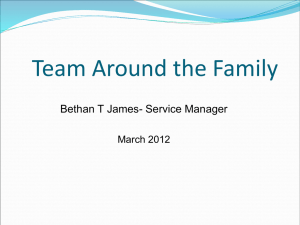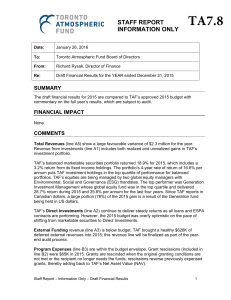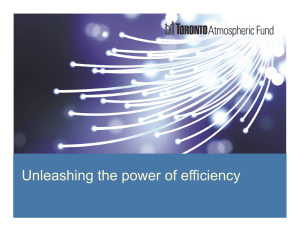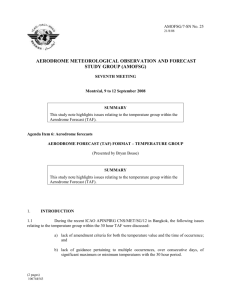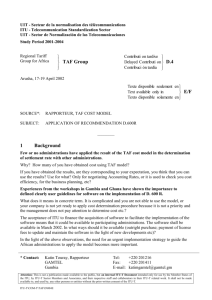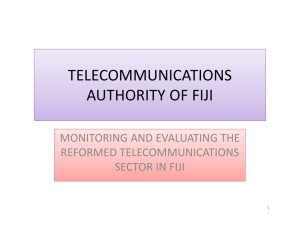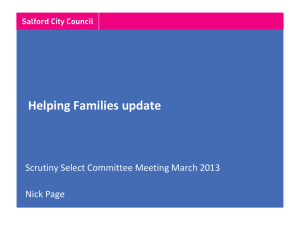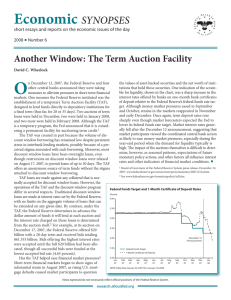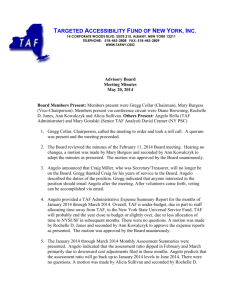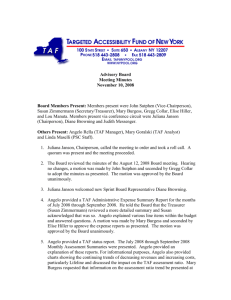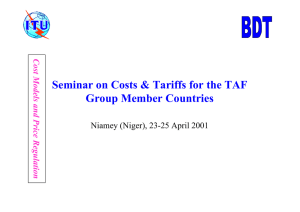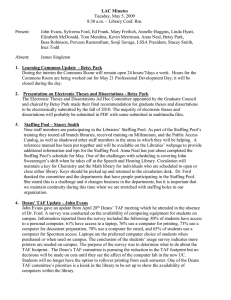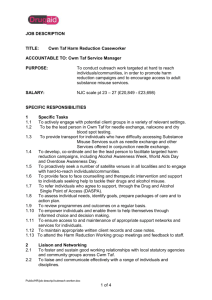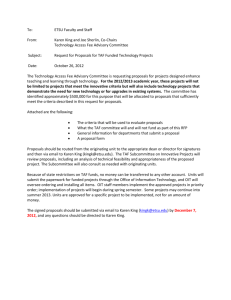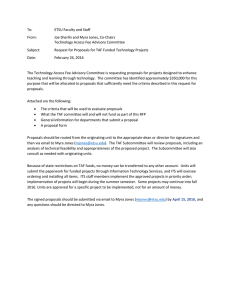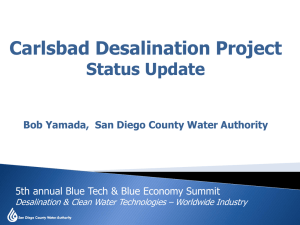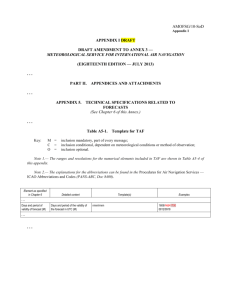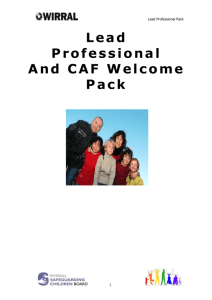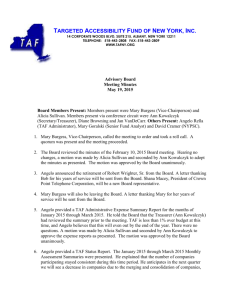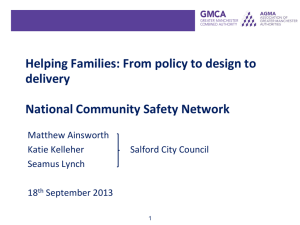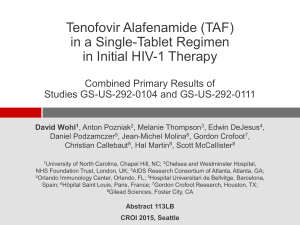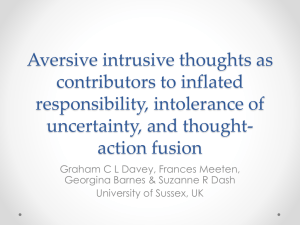Module C Powerpoint
advertisement
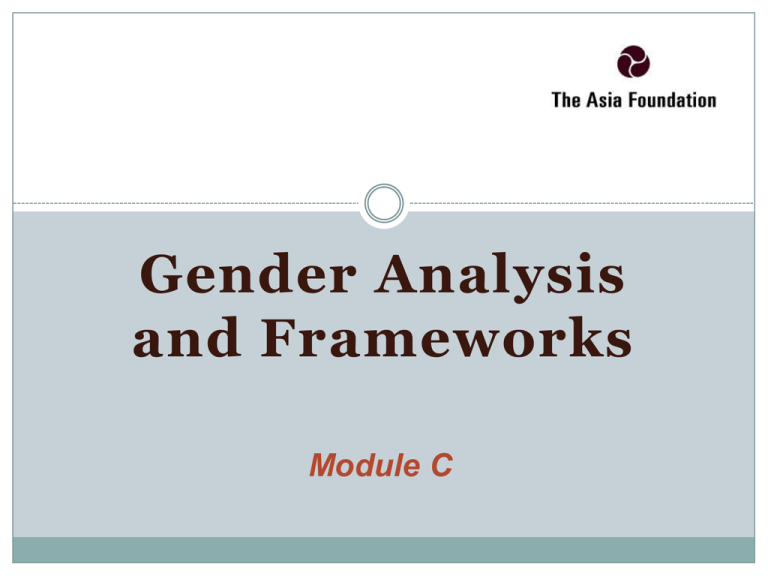
Gender Analysis and Frameworks Module C Review of the BIG IDEAS from previous sections. Learning Objectives Understand the concepts of gender mainstreaming and gender analysis. Identify when gender analysis can be used in program stages. Understand the value of gender analysis frameworks and when they can be used. Identify TAF’s key areas of concern regarding gender that should be considered in a good gender analysis (i.e. power, access, control, constraints, opportunities). Understand how to apply the hybrid framework developed for the case study. What is Gender Mainstreaming? Gender mainstreaming is: A strategy for considering women’s and men’s concerns and needs in programming to ensure that women and men benefit equally and inequality is not perpetuated. Why do we mainstream gender? Human Rights Sustainable Development for All Good governance Economic Growth Effective Programming Gender mainstreaming is a big-picture strategy to incorporate (or “mainstream”) gender concerns to achieve gender equality. Gender analysis is a process to identify, analyze, and inform action to address gender inequalities. What is gender analysis? Gender analysis involves the collection and analysis of sex-disaggregated data. Understanding the different experiences, knowledge, Sex-disaggregated data is and needs of men and women allows programs and data that, when collected, policies to include differentiates between those needs. men and women. Gender Analysis in Practice Gender analysis can be used in Project Design, Implementation, and Monitoring and Evaluation. Project Design Example Conduct a baseline survey to understand the project context including gender roles, stereotypes, and power dynamics. Implementation Example Create same-sex groups for trainings and workshops and utilize female facilitators. Monitoring and Evaluation Example Conduct evaluation and collect sex-disaggregated data to see how the project impacted men and women differently. Gender Analysis Frameworks Gender analysis frameworks are a useful tool with which to understand gender dynamics within a project or a context. When and how to use the frameworks Use a gender analysis framework Design Evaluation Use a gender analysis framework Inception Implement Use a gender analysis framework Ongoing M&E Ongoing M&E Use a gender analysis framework Because TAF has a specific approach, we need a particular framework to capture our priorities. TAF’s Political Economy Approach All development contexts are inherently political and involve competing interests. TAF’s political economy approach incorporates political and power dynamics of a local context in program design. This approach allows TAF’s programs to identify political actors on all sides and determine how to best make change. TAF Hybrid Framework Step One: Problem Identification Step Two: Identify causes of the problem and their impact on men and women. Step Three: Conduct gender analysis based on needs and goals. Consider what role men and women can play to address these. Step One: Problem Identification What is the core problem we are trying to address? Step Two: Causes and Effects Key Considerations in TAF’s Framework: Access and Control Consider who controls access to resources. Access simply means ability to use a resource (tangible or intangible). Consider power relations. Inequality in power relations can lead to imbalanced control over resources. Key Ideas in TAF’s Framework: Opportunities and Constraints Gender-based opportunities are gender relations that facilitate men’s or women’s access to resources or opportunities of any type. Gender-based constraints are gender relations that inhibit either men’s or women’s access to resources or opportunities of any type. Source: http://www.igwg.org/igwg_media/GenderSafeMothrhd/intro-gendr-analysis-present.pdf Step Three: Gender Analysis Gender Analysis Activity Review the case study Identify the problem Apply the TAF Hybrid framework Follow-up Questions 1. Refer back to Module B in which you identified areas of gender equality/inequality in Wonderland. After working through the gender analysis framework, do you think these issues are critical to consider? 2. Do the potential interventions you identified in the framework address these gender inequalities? 3. Look at the possible interventions you just developed. Considering those interventions, provide two detailed descriptions of how you have mainstreamed gender into the implementation of this project. 4. What might be some obstacles to conducting a rigorous gender analysis in this context? What are the BIG IDEAS from this section?
